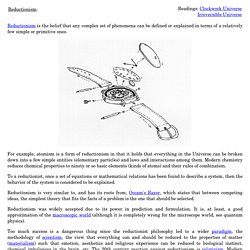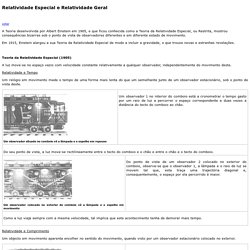

Hubble Goes to the eXtreme to Assemble Farthest-Ever View of the Universe. Hubble Goes to the eXtreme to Assemble Farthest-Ever View of the Universe Like photographers assembling a portfolio of best shots, astronomers have assembled a new, improved portrait of mankind's deepest-ever view of the universe.

(Credit: NASA; ESA; G. Illingworth, D. Magee, and P. Oesch, University of California, Santa Cruz; R. Called the eXtreme Deep Field, or XDF, the photo was assembled by combining 10 years of NASA Hubble Space Telescope photographs taken of a patch of sky at the center of the original Hubble Ultra Deep Field. The Hubble Ultra Deep Field is an image of a small area of space in the constellation Fornax, created using Hubble Space Telescope data from 2003 and 2004. The new full-color XDF image is even more sensitive, and contains about 5,500 galaxies even within its smaller field of view. Untitled. Untitled. File:100inchHooker.jpg. File:Bertini fresco of Galileo Galilei and Doge of Venice.jpg. Untitled. File:Bartolomeu Velho 1568.jpg. File:Almagest 1.jpeg.
File:Ptolemy 16century.jpg. File:Aristarchus van Samos, atlas of Cellarius (1646).jpg. File:Cellarius Harmonia Macrocosmica - Planisphaerium Copernicanum.jpg. Clockwork Universe. Reductionism is the belief that any complex set of phenomena can be defined or explained in terms of a relatively few simple or primitive ones.

For example, atomism is a form of reductionism in that it holds that everything in the Universe can be broken down into a few simple entities (elementary particles) and laws and interactions among them. Modern chemistry reduces chemical properties to ninety or so basic elements (kinds of atoms) and their rules of combination. To a reductionist, once a set of equations or mathematical relations has been found to describe a system, then the behavior of the system is considered to be explained. Reductionism is very similar to, and has its roots from, Occam's Razor, which states that between competing ideas, the simplest theory that fits the facts of a problem is the one that should be selected. Reductionism was widely accepted due to its power in prediction and formulation. File:Planetarium in Putnam Gallery 2, 2009-11-24.jpg.
Gravity Probe B and Space-Time. File:Albert Einstein 1979 USSR Stamp.jpg. File:World line.svg. Summary[edit] Licensing[edit] == Original upload log =="" The original description page was here.

All following user names refer to en.wikipedia. Click on a date/time to view the file as it appeared at that time. Untitled. File:CentralBrasil.jpg. Untitled. Untitled. Teoria da Relatividade Especial (1905) Relatividade Especial e Relatividade Geral voltar A Teoria desenvolvida por Albert Einstein em 1905, e que ficou conhecida como a Teoria da Relatividade Especial, ou Restrita, mostrou consequências bizarras sob o ponto de vista de observadores diferentes e em diferente estado de movimento.

Em 1915, Einstein alargou a sua Teoria da Relatividade Especial de modo a incluir a gravidade, o que trouxe novas e estranhas revelações. Teoria da Relatividade Especial (1905) A luz move-se no espaço vazio com velocidade constante relativamente a qualquer observador, independentemente do movimento deste. Relatividade e Tempo Um relógio em movimento mede o tempo de uma forma mais lenta do que um semelhante junto de um observador estacionário, sob o ponto de vista deste. Relatividade e Comprimento Um objecto em movimento aparenta encolher no sentido do movimento, quando visto por um observador estacionário colocado no exterior. Teoria da Relatividade Geral (1915) A equivalência entre gravidade e aceleração. Tempo dos tempos - Marcio Doctors, Marcio Tavares d' Amaral. File:Einstein 1921 by F Schmutzer - restoration.jpg.
File:Spacetime curvature.png. File:Black Hole Milkyway.jpg. File:Heic1401a-Abell2744-20140107.jpg. Hubble Goes to the eXtreme to Assemble Farthest-Ever View of the Universe. Untitled. File:Universe expansion2.png. Untitled. Untitled. Sir Roger Penrose: An Alternate Theory of the Big Bang? According to the most widely-accepted theory of origins, at some point, roughly 14 billion years ago, everything that is, was, and will ever be, was tightly packed into a small, but infinitely dense point—a singularity.

This ‘point’ eventually exploded, which ultimately hurdled everything we see into existence (of course, we’re condensing here). However, to many physicists, 13.7 billion years just isn’t enough time for highly complex structures—like superclusters—to form. One particular physicist from the University of Oxford not only believes that the big bang model leaves a lot to be desired, but that he can prove it. In fact, drawing from the only evidence left behind after the big bang—the cosmic microwave background radiation, which was thrust into existence when the universe was just 300,000 years old—the big bang wasn’t the beginning but instead, it was only one in a series of cyclical big bangs, or “aeons.’ A virtual Universe. File:Big Crunch.gif. Untitled. File:File-Ngc5866 hst big.png. Latinstock Brasil. Sab. Sab. Garden and Cosmos. A rare chance to see paintings in the royal collection of the Mehrangarh Museum Trust, Jodhpur The exhibition will feature a loan of 56 paintings from India, none of which have been displayed before in Europe.

It is a fantastic opportunity to experience the unique art tradition that flourished in the royal courts between the 17th and 19th centuries. For more information Previous 1 Death of Vali; Rama and Lakshmana wait out of the monsoon (detail). File:Cosmic Oceans (detail), one of seven folios from the Nath Charit. Attributed to Bulaki, 1823 (Samvat 1880); 44.1 x 118.2 cm Mehrangarh Museum Trust.jpg. File:Guisard - Milky Way.jpg.